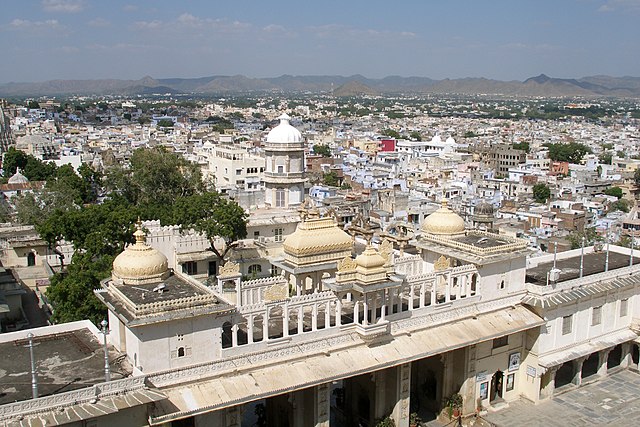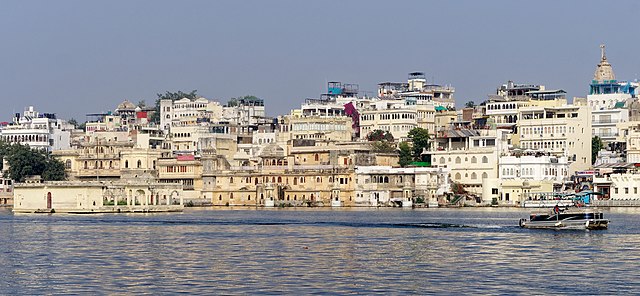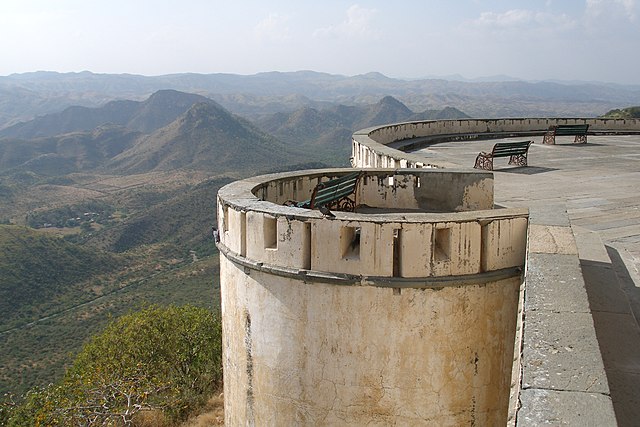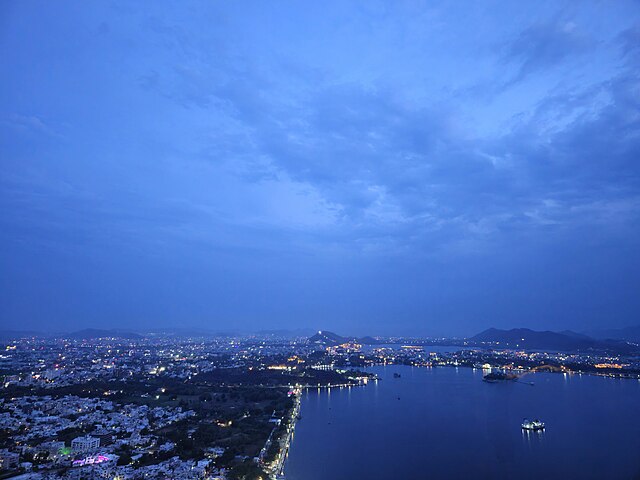Picture yourself gliding across Lake Pichola, the sun setting behind Udaipur’s regal palaces, a gentle breeze kissing your face. Sounds dreamy, right? But before you pack your bags for the City of Lakes, let’s talk about something that can make or break your trip: the weather. Udaipur’s climate is as vibrant as its culture, with each season painting the city in unique hues. Whether you’re chasing monsoon romance or basking in winter’s charm, understanding Udaipur’s weather is key to planning an unforgettable adventure. Let’s dive into this 3000-word guide to explore the seasons, temperatures, travel tips, and more!
Why Udaipur’s Weather Matters for Travelers
Ever arrived at a destination only to find your plans drenched by unexpected rain or scorched by blazing heat? Udaipur’s weather can be a game-changer for your itinerary. Known for its lakes, forts, and royal heritage, this Rajasthan gem experiences a semi-arid climate with distinct seasons. From balmy winters to sizzling summers and dramatic monsoons, each season shapes the city’s vibe. Whether you’re exploring the City Palace or savoring rooftop views, knowing what the skies have in store helps you pack smart, plan activities, and soak in Udaipur’s magic without weather woes.
A Quick Snapshot of Udaipur’s Climate
Udaipur sits in southern Rajasthan, cradled by the Aravalli hills. Its climate is classified as BSh (hot semi-arid) under the Köppen system, meaning hot summers, moderate winters, and a monsoon season that transforms the city into a lush oasis. Average temperatures range from 10°C (50°F) in winter to 40°C (104°F) in summer, with annual rainfall around 600 mm, mostly between June and September. But numbers only tell half the story—let’s break down what each season feels like on the ground.
Udaipur’s Seasons: A Year-Round Breakdown

Udaipur’s weather dances through four seasons, each with its own personality. Think of it like a Bollywood movie: there’s drama (monsoons), romance (winters), intensity (summers), and a refreshing interlude (post-monsoon). Here’s what to expect throughout the year.
Summer in Udaipur: April to June
Summer in Udaipur is like stepping into an oven—hot, dry, and relentless. Temperatures often climb to 38–40°C (100–104°F), with May being the hottest month. The sun blazes down, and the lakes shimmer under its glare. While the heat can feel overwhelming, it’s also when Udaipur sees fewer tourists, meaning quieter palaces and better hotel deals. If you’re braving the summer, stick to indoor attractions like the Crystal Gallery or Bagore Ki Haveli museum during the day, and save outdoor adventures for early mornings or evenings when the heat eases.
Tips for Surviving Udaipur’s Summer
Hydration is your best friend—carry a water bottle everywhere. Opt for loose, breathable cotton clothes and slap on sunscreen like it’s your job. Evening boat rides on Lake Pichola are a must; the cool breeze off the water feels like a hug from nature. Pro tip: summer’s low season means discounts on accommodations, so you can splurge on a heritage hotel without breaking the bank.
Monsoon Magic: July to September
When the monsoon arrives, Udaipur transforms into a scene from a romantic novel. The Aravalli hills turn lush green, lakes brim with water, and the air carries a fresh, earthy scent. Rainfall is moderate, averaging 600–700 mm, but expect short, heavy showers rather than all-day drizzle. Temperatures drop to a pleasant 25–35°C (77–95°F), making it a great time for sightseeing. Monsoon is also when Udaipur’s festivals, like Teej, light up the city with color and music.
Why Monsoon is a Hidden Gem for Visitors
Ever seen a palace reflected in a rain-kissed lake? Monsoon in Udaipur is pure poetry. The crowds are thinner than in winter, and the city feels alive with nature’s touch. Pack a light raincoat or umbrella, and don’t shy away from exploring. The Saheliyon Ki Bari garden or Monsoon Palace (Sajjangarh) are magical during showers. Just watch out for slippery streets and occasional waterlogging in low-lying areas.
Winter Wonderland: October to March
Winter is Udaipur’s superstar season, and it’s easy to see why. With daytime temperatures hovering between 20–28°C (68–82°F) and nights dipping to 10–15°C (50–59°F), the weather is perfect for exploring. The skies are clear, the sun is gentle, and the city buzzes with tourists. From strolling through Gulab Bagh to catching a cultural show at Shilpgram, winter lets you experience Udaipur at its finest.
Making the Most of Udaipur’s Winter
Winter is peak season, so book hotels and activities early. Layer up for chilly evenings, especially if you’re dining at rooftop restaurants with lake views. Don’t miss the Mewar Festival (March) or a sunrise hike to the Monsoon Palace for jaw-dropping vistas. Winter’s also ideal for photography—the soft light makes every palace and haveli Instagram-worthy.
Month-by-Month Weather Guide

Want a quick cheat sheet for planning your trip? Here’s a month-by-month peek at Udaipur’s weather, with temperatures, rainfall, and travel vibes.
January: Crisp and Festive
January is peak winter, with highs of 24°C (75°F) and lows of 9°C (48°F). It’s dry, sunny, and ideal for sightseeing. Kite festivals and cultural events add a festive spark. Pack a light jacket for evenings.
July: Monsoon’s Peak
July sees the heaviest rainfall, with temperatures around 30°C (86°F). The city’s lakes overflow, and greenery thrives. Perfect for indoor museums or cozy café visits, with occasional outdoor jaunts between showers.
October: The Sweet Spot
October marks the transition to winter, with highs of 33°C (91°F) and minimal rain. The weather is warm but comfortable, making it a great shoulder season for fewer crowds and vibrant landscapes.
How Weather Shapes Udaipur’s Attractions
Udaipur’s weather doesn’t just affect your wardrobe—it changes how you experience the city’s iconic spots. Let’s see how the climate plays out at key attractions.
Lake Pichola: A Weather-Dependent Gem
Lake Pichola is Udaipur’s heart, and its beauty shifts with the seasons. In summer, the lake sparkles under intense sunlight, but water levels can dip. Monsoon fills it to the brim, creating postcard-perfect reflections of Jag Mandir. Winter offers calm, misty mornings ideal for boat rides. Always check weather forecasts before booking a sunset cruise—rain or high winds can pause boat services.
City Palace: Indoor and Outdoor Charm
The City Palace is a year-round delight, but weather adds its flavor. Summer’s heat makes its air-conditioned museum a haven, while monsoon’s greenery enhances courtyard views. Winter’s mild days are perfect for lingering on terraces overlooking the lake. No matter the season, early visits beat the crowds and heat.
Packing for Udaipur’s Weather
Packing for Udaipur is like prepping for a multi-act play—each season demands a different costume. Here’s your packing guide to stay comfy and stylish.
Summer Packing List
Think light and airy: cotton kurtas, shorts, sunglasses, and a wide-brimmed hat. A reusable water bottle and high-SPF sunscreen are non-negotiable. Flip-flops work for casual strolls, but comfy sneakers are better for palace tours.
Monsoon Essentials
Pack quick-dry clothes, a waterproof backpack, and sturdy sandals. A compact umbrella or poncho is handy for sudden showers. Toss in mosquito repellent—rain brings out the bugs.
Winter Wardrobe
Layers are key: T-shirts for sunny days, sweaters for evenings, and a light scarf for breezy nights. Comfortable walking shoes are a must for exploring forts and markets. If you’re visiting in January, a warm jacket won’t hurt.
Weather and Festivals: A Perfect Pair

Udaipur’s festivals are deeply tied to its weather, turning seasonal shifts into celebrations. Monsoon brings Teej, with women in colorful sarees swinging under rainclouds. Winter hosts the Mewar Festival, showcasing folk dances and lake processions. Summer’s Gangaur celebrates marital bliss with vibrant processions. Check festival dates when planning your trip—they’re a window into Udaipur’s soul.
Recent Weather Trends in Udaipur
Recent posts on X highlight Udaipur’s dynamic weather. In June 2025, the IMD issued alerts for medium to heavy rain, with dust storms and strong winds expected. These patterns align with Udaipur’s typical monsoon onset, where sudden showers refresh the city but can disrupt travel. Climate change is also nudging temperatures higher and making rainfall less predictable, so always check forecasts before your trip.
[](https://x.com/PTI_News/status/1934251750284054620)[](https://x.com/Rajsthanweather/status/1935523468264501560)
Best Time to Visit Udaipur
So, when’s the sweet spot for visiting Udaipur? October to March wins for its mild, sunny days and lively festivals. Monsoon (July–September) is a close second for budget travelers and nature lovers. Summer (April–June) is best avoided unless you’re a heat warrior chasing deals. Ultimately, your ideal time depends on your vibe—cozy winter explorer, monsoon romantic, or summer bargain hunter.
Weather Safety Tips for Udaipur
Udaipur’s weather is generally traveler-friendly, but a few precautions go a long way. In summer, avoid midday heat to prevent dehydration. During monsoon, steer clear of flood-prone areas and check road conditions before rural trips. In winter, foggy mornings can delay flights or trains, so build buffer time into your schedule. Download a weather app like AccuWeather for real-time updates.
Conclusion
Udaipur’s weather is like a seasoned storyteller, weaving tales of scorching summers, romantic rains, and crisp winters. Each season paints the City of Lakes in a new light, offering unique experiences for every traveler. Whether you’re chasing monsoon reflections on Lake Pichola or winter sunsets at the Monsoon Palace, understanding Udaipur’s climate lets you craft a trip that’s as magical as the city itself. So, grab your calendar, check the forecast, and let Udaipur’s weather guide your next adventure. Where will the skies take you?
FAQs About Udaipur’s Weather
1. What’s the best month to visit Udaipur for pleasant weather?
October to March, especially November and February, offer mild temperatures (20–28°C) and clear skies, perfect for sightseeing.
2. Does Udaipur get very cold in winter?
Not really! Winter nights can dip to 10°C (50°F), but days are comfortably warm at 24–28°C (75–82°F). A light jacket is enough.
3. Is monsoon a good time to visit Udaipur?
Yes, if you love lush greenery and fewer crowds! July to September brings rain, but short showers won’t ruin your plans. Pack rain gear.
4. How hot does Udaipur get in summer?
Pretty toasty! April to June sees highs of 38–40°C (100–104°F). Stick to indoor activities during the day and hydrate often.
5. Are there weather-related disruptions in Udaipur?
Monsoon can cause waterlogging or road delays, while winter fog might affect flights. Check forecasts and plan extra travel time.

